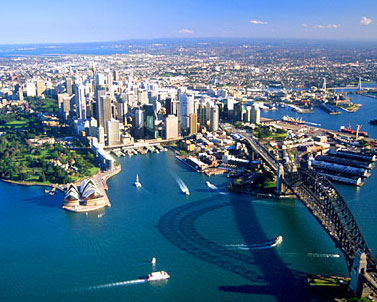Global Investor Guide 2015: Australasia
The great Australian dream to own a home in suburbia, close to the city or beach, with a backyard big enough for the kids and a dog is edging further out of reach.
Residential prices rose by 8% in Australia and by 12% in New Zealand in 2014 – the fastest growth rate in 18 years – with prices expected to rise further this year.
With low returns in the bank, investors are looking for better yields in the commercial property market, either directly through superannuation funds or with listed trusts on the share market.
[caption id="attachment_813278" align="alignright" width="300"] Click to enlarge[/caption]
The great Australian dream to own a home in suburbia, close to the city or beach, with a backyard big enough for the kids and a dog is edging further out of reach.
Residential prices rose by 8% in Australia and by 12% in New Zealand in 2014 – the fastest growth rate in 18 years – with prices expected to rise further this year.
With low returns in the bank, investors are looking for better yields in the commercial property market, either directly through superannuation funds or with listed trusts on the share market.
Commercial hotspots
Market yields for grade A office space are highest in Adelaide (8.21%) and Perth (8.12%), although Sydney and Melbourne are still the target for international investors, according to Savills Australia.
Specialist property, such as warehousing and bulky goods retail facilities, are performing well across the country, says Australian Property Monitors senior economist Andrew Wilson.
So too is CBD retail, with growing demand from multinational chains looking to set up in high-profile city centre shopping strips driving price growth in Melbourne’s Bourke Street Mall and Sydney’s Martin Place.
The trend has seen rents increase at their fastest pace since 2008, with Sydney CBD retail rent growing at 10.7% and Melbourne not far behind at 7.8%.
Residential hotspots
January data from property analyst Tim Lawless of CoreLogic RP Data shows a two-tiered housing market between the powerhouses of Sydney and Melbourne and the rest of the country.
Price growth in Melbourne and Sydney’s inner city circle suburbs and CBD flats has been driven partly by strong demand from Chinese buyers looking for a safe haven.
Across the Tasman Sea, Reserve Bank governor Graeme Wheeler warned of a “sharp correction” in the housing market as rocketing house prices in Auckland and Christchurch posed a severe risk to the economy overall. Average prices in Auckland hit NZ$757,319 (£372,000) and building costs in Christchurch rose 25% above those in Australia.
Must-have contacts
Dr Stanley Quek Singaporean GP turned developer behind Sydney’s new Central Park scheme including the now iconic residential tower, One Central Park.
Steve McCann, chief executive and managing director of Lend Lease The need-to-know contact at one of Australia’s biggest property and construction companies.
Tim Lawless, CoreLogic RP Data Research analyst focused on real estate markets, demographics and economic trends across Australia.
Brendan Gore, chief executive of Peet Oversees Australia’s largest residential land developer.
Sydney continues to hold Australia’s highest rates of capital gains since 2008, with values climbing by 13% in 2014 alone and the average house price skipping above AUS$1m (£504,000) for the first time.
Australia’s mining capital, Perth, had a housing boom between 2003 and 2013 but price rises slowed last year from 10% growth to zero. It coincided with slowing demand from China for commodities and an unheard-of unemployment rate of 5.3%, according to the Australian Bureau of Statistics.
Queensland’s capital, Brisbane, has reported flat housing price growth since 2013 owing to an underperforming economy.
The slowest growth areas were the outer suburban areas affected by public service job cuts from the now-ousted conservative state government. But forecasts were for an average 5-6% growth this year in mid-priced suburbs.
[caption id="attachment_813277" align="alignleft" width="300"] Click to enlarge[/caption]
Growth areas
Hotspots this year have been identified as the budget outer Brisbane suburbs of Ipswich and Logan, says Wilson.
In Melbourne, suburbs close to traditional strong performers – such as Ashburton, close to solid-performing suburbs Camberwell, Glen Iris and Hawthorn – have also been highlighted.
One surprising hotspot and one that researchers and investors might not be expecting to see named a growth area is Hobart, Tasmania. After being relatively dormant for the past six years, the city’s commercial market has risen sharply since 2013 and Hobart homes are the most affordable of any capital city.
After Darwin, the southernmost capital is also showing the second-highest gross rental yields of any other capital city.
Risks and challenges
The biggest challenge will come as economists predict the end of an expansion phase in Australian residential property, with rising unemployment and a slower economy taking hold.
“The big picture for Australia’s housing market cycle is set to moderate. We haven’t got the prospects of the mining boom on our horizon now and while interest rates are expected to go lower, that won’t have much impact because it’s a reflection on higher unemployment,’’ says Wilson.











